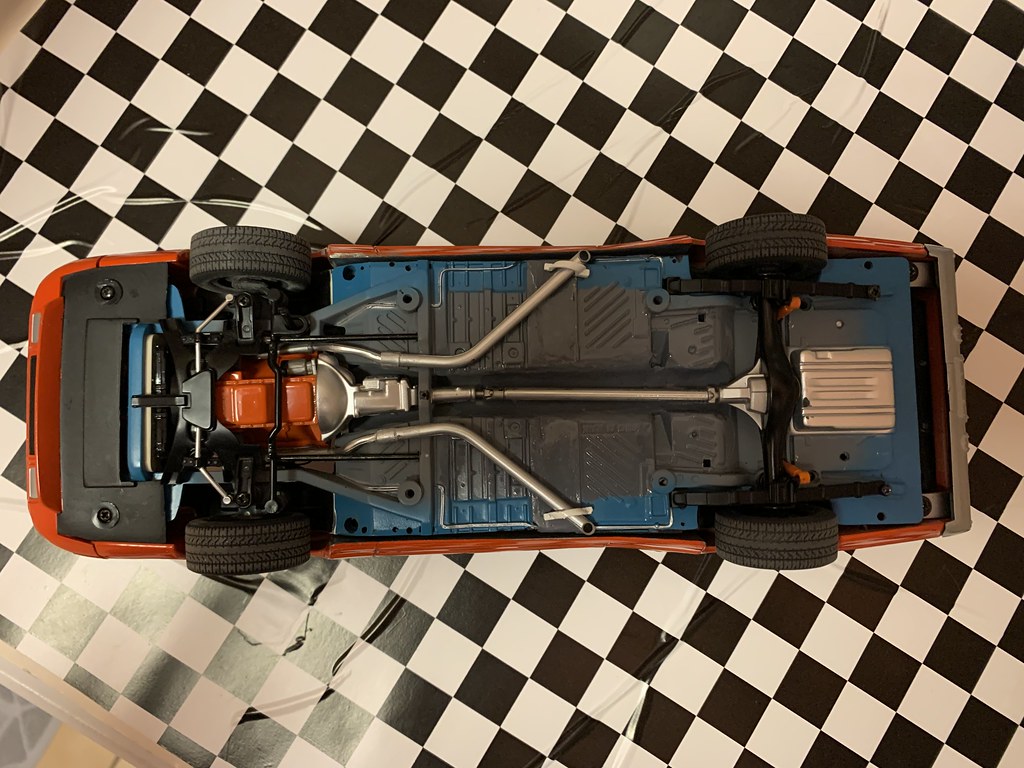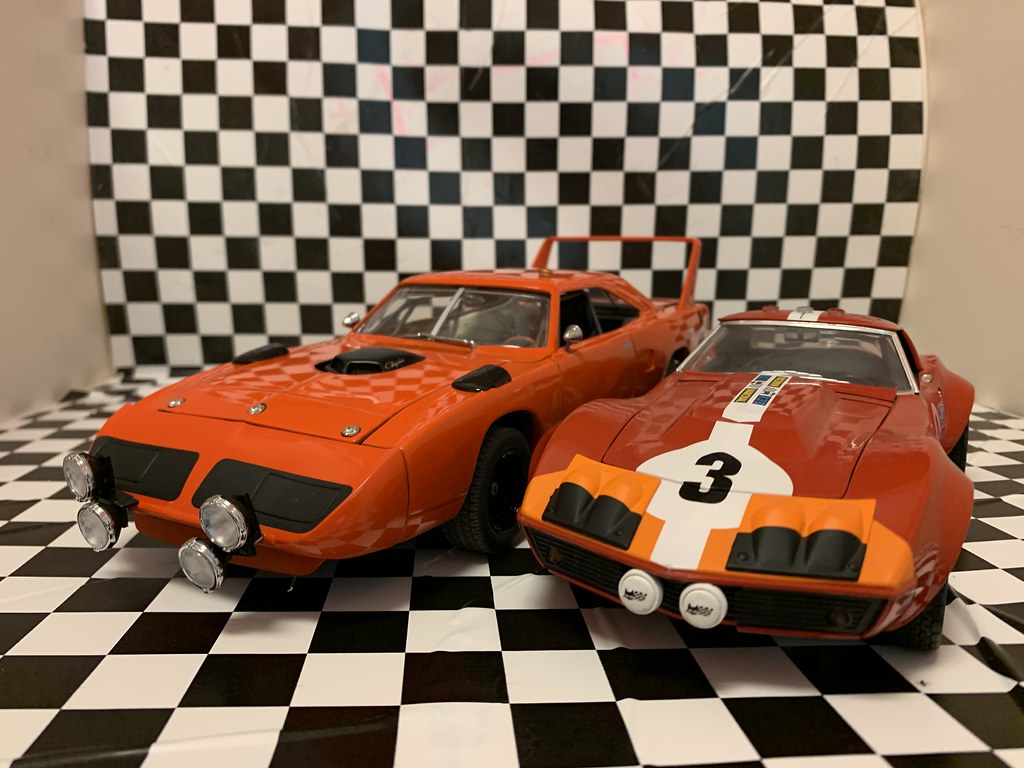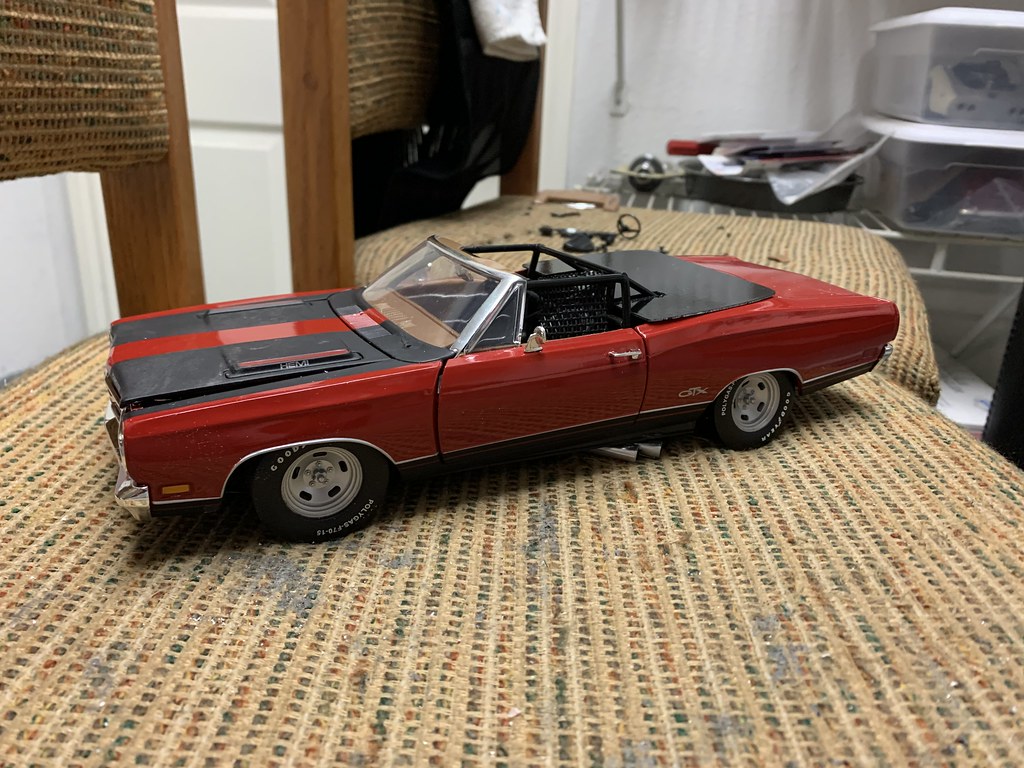1/18 Fantasy Chrysler of France Plymouth Superbird GT
Oct 12, 2021 18:52:15 GMT -5
dge467 and Jcon like this
Post by oldtimer on Oct 12, 2021 18:52:15 GMT -5
Henri Chemin had a career mainly in the automobile industry, first at Ford (1956-1968) and then at Chrysler-Simca (1969-1974).
The January 5, 1969, Ford of France ordered the cessation of its activities in competition and Chemin decided to join William Reiber at Simca Chrysler.
In March 1969, he took charge of the competition department with three objectives:
1. Win competitions, including rallies as quickly as possible.
2. Rebuild the brand image with promotional operations focused on young drivers.
3. Complete the already laudable list of Matra Simca.
Chemin made a promising start in rallying with SIMCA 000, SIMCA 1200 and CG 1500.
More than a thousand young drivers benefiting from assistance and performance bonuses obtain, with the cars in the range, thousands of victories which improve the brand image: the Simca 1000 Rally "was born from this operation as well as the Simca Racing Team (SRT).
In 1970, Chemin, eager to do battle with the Renault Alpines and other Porsches, asked Bernard Boyer, engineer at Matra, to study the construction of a modern rally coupe equipped with the "developed" engine of the Chrysler 180.
He obtained the agreement of Jean-Luc Lagardère and the CG - MC prototype with central engine was produced in four months and won for its first outing, the Critérium des Cévennes , piloted by Gérard Larrousse. Dozens of victories followed by Bernard Fiorentino, Philippe Renaudat and Michel Saliba.
From 1970 to 1972, as a driver, he won three titles of champion of France on circuit (Tourism category) and a mountain title (1972) on Plymouth Barracuda 383 and Plymouth Hemicuda 426 against Ford Mustang, Chevrolet Camaro and BMWs.
Secretly, also in 1970, Chrysler of France and Chemin received corporate approval to develop a car to compete in the famous Le Mans 24 Hour race. Homologation papers were filed with the FIA for a “GT” version of the Plymouth Superbird.
To speed up development, a companion chassis to the Hemicuda was stripped of its Barracuda-based bodywork, and the wheelbase was extended to accommodate Nascar Superbird bodywork acquired from Petty Enterprises.
Here are comparison pictures of the Superbird GT and Chemin's Hemicuda.


To comply with FIA safety regulations, the Superbird GT would have to be fitted with head and taillights, a wiper, and an endurance fuel cell. To comply with the GT regulations at the time, the suspension, brakes, engine, and other components had to remain in their original, stock locations.














The rushed development, complicated by frequent visits to the Chrysler of France fabrication shops by FIA officials, left very little sorting time, and an essentially untried car, still in the corrosion-resistant paint that the Petty shop had covered the sheet metal in, showed up for the Le Mans Time Trials, in preparation for the June 1970 race.
Gerard Larrousse (under contract with Porsche at the time, but available as Porsche did not participate in the Time Trials), based on his prior relationship with Chemin, and familiarity with the Circuit de la Sarthe, was chosen to pilot the Superbird GT.
Since there were no homologation papers, ACO officials wouldn’t let the car out onto the track while the other competitors practiced. Track time for the Superbird GT was limited to breaks in the schedule, such as lunch hour.
With the headlights removed, it is rumored that the car achieved a top speed down the Mulsanne Straight almost four miles per hour faster than the Corvettes that were at the test; however lap times were less than competitive, primarily due to an unsorted chassis.

After a frustrating two days, the team loaded the Superbird GT onto their transporter and headed back to their shops. The FIA informed Chrysler that unless the requisite number of complying vehicles were built, no homologation papers would be approved.
Despite Chrysler pointing to the Superbirds competing in the USA under both Nascar and USAC sanctions, the Euro-centric FIA would not budge, saying that if a Superbird GT were to be approved, all the versions must match the one produced in France.
With that, the Superbird GT chassis was stripped of any essential parts as spares for the Chemin’s Hemicuda, and the hull was unceremoniously dumped in the back lot of the fabrication shop.
In April 1973, with the death of William Reiber, and despite the hundreds of victories acquired in three years and eight French championship titles, the new management of Simca Chrysler decided to dissolve the competition department, and the Le Mans Superbird GT was scrapped, along with other racing assets.
Album of the complete build is available here: flic.kr/s/aHsmMC95g5
The January 5, 1969, Ford of France ordered the cessation of its activities in competition and Chemin decided to join William Reiber at Simca Chrysler.
In March 1969, he took charge of the competition department with three objectives:
1. Win competitions, including rallies as quickly as possible.
2. Rebuild the brand image with promotional operations focused on young drivers.
3. Complete the already laudable list of Matra Simca.
Chemin made a promising start in rallying with SIMCA 000, SIMCA 1200 and CG 1500.
More than a thousand young drivers benefiting from assistance and performance bonuses obtain, with the cars in the range, thousands of victories which improve the brand image: the Simca 1000 Rally "was born from this operation as well as the Simca Racing Team (SRT).
In 1970, Chemin, eager to do battle with the Renault Alpines and other Porsches, asked Bernard Boyer, engineer at Matra, to study the construction of a modern rally coupe equipped with the "developed" engine of the Chrysler 180.
He obtained the agreement of Jean-Luc Lagardère and the CG - MC prototype with central engine was produced in four months and won for its first outing, the Critérium des Cévennes , piloted by Gérard Larrousse. Dozens of victories followed by Bernard Fiorentino, Philippe Renaudat and Michel Saliba.
From 1970 to 1972, as a driver, he won three titles of champion of France on circuit (Tourism category) and a mountain title (1972) on Plymouth Barracuda 383 and Plymouth Hemicuda 426 against Ford Mustang, Chevrolet Camaro and BMWs.
Secretly, also in 1970, Chrysler of France and Chemin received corporate approval to develop a car to compete in the famous Le Mans 24 Hour race. Homologation papers were filed with the FIA for a “GT” version of the Plymouth Superbird.
To speed up development, a companion chassis to the Hemicuda was stripped of its Barracuda-based bodywork, and the wheelbase was extended to accommodate Nascar Superbird bodywork acquired from Petty Enterprises.
Here are comparison pictures of the Superbird GT and Chemin's Hemicuda.


To comply with FIA safety regulations, the Superbird GT would have to be fitted with head and taillights, a wiper, and an endurance fuel cell. To comply with the GT regulations at the time, the suspension, brakes, engine, and other components had to remain in their original, stock locations.














The rushed development, complicated by frequent visits to the Chrysler of France fabrication shops by FIA officials, left very little sorting time, and an essentially untried car, still in the corrosion-resistant paint that the Petty shop had covered the sheet metal in, showed up for the Le Mans Time Trials, in preparation for the June 1970 race.
Gerard Larrousse (under contract with Porsche at the time, but available as Porsche did not participate in the Time Trials), based on his prior relationship with Chemin, and familiarity with the Circuit de la Sarthe, was chosen to pilot the Superbird GT.
Since there were no homologation papers, ACO officials wouldn’t let the car out onto the track while the other competitors practiced. Track time for the Superbird GT was limited to breaks in the schedule, such as lunch hour.
With the headlights removed, it is rumored that the car achieved a top speed down the Mulsanne Straight almost four miles per hour faster than the Corvettes that were at the test; however lap times were less than competitive, primarily due to an unsorted chassis.

After a frustrating two days, the team loaded the Superbird GT onto their transporter and headed back to their shops. The FIA informed Chrysler that unless the requisite number of complying vehicles were built, no homologation papers would be approved.
Despite Chrysler pointing to the Superbirds competing in the USA under both Nascar and USAC sanctions, the Euro-centric FIA would not budge, saying that if a Superbird GT were to be approved, all the versions must match the one produced in France.
With that, the Superbird GT chassis was stripped of any essential parts as spares for the Chemin’s Hemicuda, and the hull was unceremoniously dumped in the back lot of the fabrication shop.
In April 1973, with the death of William Reiber, and despite the hundreds of victories acquired in three years and eight French championship titles, the new management of Simca Chrysler decided to dissolve the competition department, and the Le Mans Superbird GT was scrapped, along with other racing assets.
Album of the complete build is available here: flic.kr/s/aHsmMC95g5





